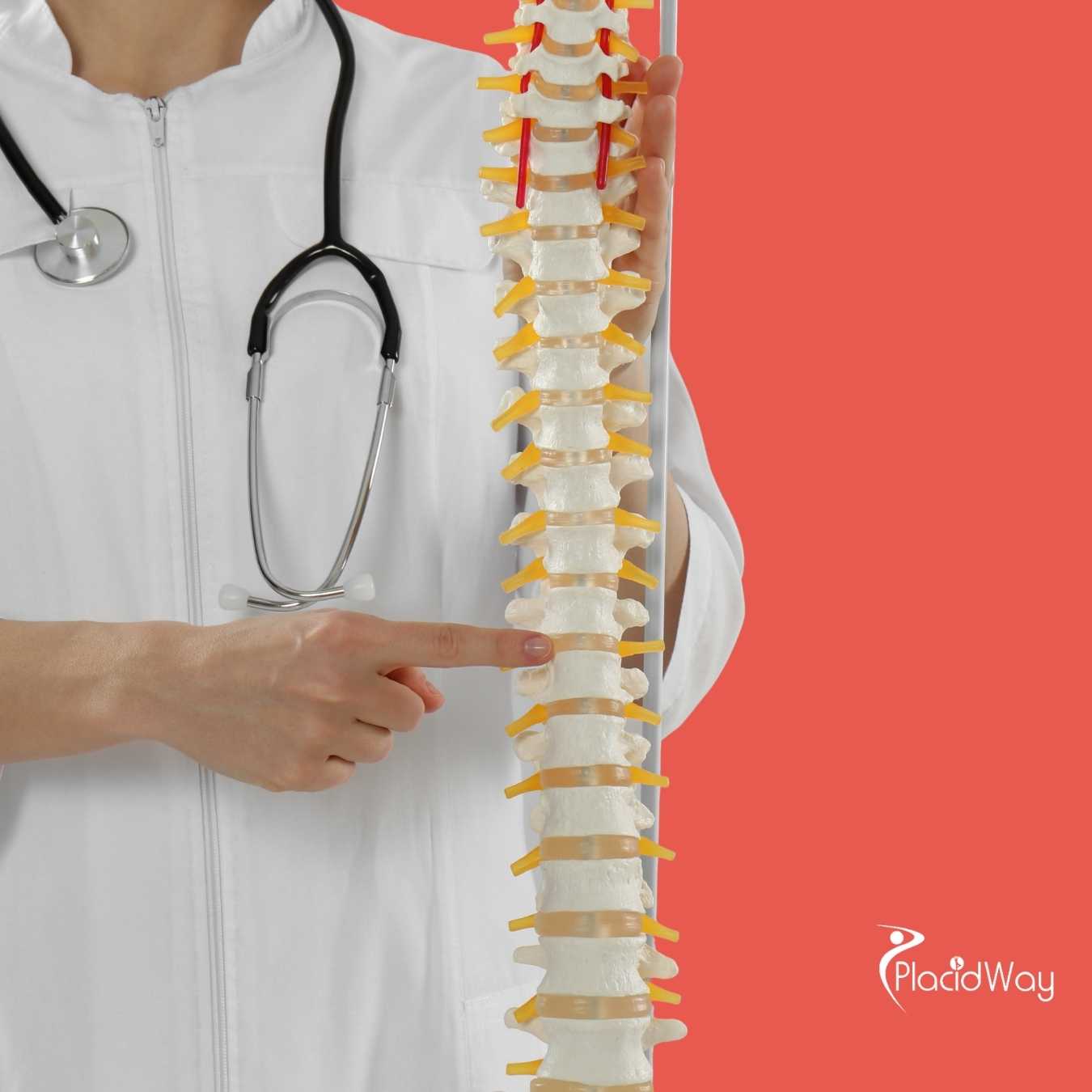Stem Cell Treatment for Leukemia: Cost, Process, and What to Expect
.png)
Understanding the financial aspects of a complex medical procedure like stem cell treatment for leukemia is often as overwhelming as the diagnosis itself. Many patients and their families wonder, "How much does stem cell treatment for leukemia cost?" The truth is, there isn't one single price tag, as the expense can vary widely based on numerous factors, including the type of transplant, where it's performed, and the duration of recovery and follow-up care.
This guide aims to shed light on these costs, helping you navigate the financial landscape of this life-saving therapy. Stem cell transplantation, often referred to as a bone marrow transplant, is a crucial treatment for various forms of leukemia. It involves replacing damaged or diseased bone marrow with healthy blood-forming stem cells.
This procedure offers a chance for remission and recovery, but the financial burden can be substantial. We will explore the components of these costs, discuss insurance coverage, and even touch upon options like medical tourism that might provide alternative solutions for managing the expense of leukemia stem cell therapy.
How much does stem cell treatment for leukemia cost in the US?
The cost of stem cell treatment for leukemia in the U.S. can be quite high due to the intensive nature of the procedure, specialized medical teams, advanced technology, and extensive pre- and post-transplant care. An autologous stem cell transplant, which uses the patient's own stem cells, typically falls on the lower end of the spectrum, usually between $150,000 and $300,000. This is because it eliminates the need for donor matching and certain immunosuppressant medications. On the other hand, an allogeneic stem cell transplant, which uses stem cells from a matched donor, is significantly more expensive.
These costs can range from $300,000 to $800,000 or even exceed $1 million in complex cases. This higher cost accounts for donor search and procurement, additional compatibility testing, more potent immunosuppressive drugs to prevent graft-versus-host disease (GVHD), and longer, more intensive hospitalization. The choice of hospital also plays a role, with major academic medical centers often having higher charges.
What factors influence the cost of stem cell treatment for leukemia?
The variation in the cost of stem cell treatment for leukemia is not arbitrary but tied to several critical elements. The primary differentiator is the transplant type:
- Autologous Transplant: Generally less expensive, as it uses the patient’s own cells, reducing donor-related costs and typically having fewer complications.
- Allogeneic Transplant: Involves a donor, leading to costs for donor search, tissue typing, donor harvest, and often more extensive post-transplant care due to potential complications like GVHD.
Beyond the transplant type, other significant factors include:
- Hospital and Location: Elite cancer centers and facilities in major metropolitan areas often have higher pricing compared to smaller hospitals or those in less expensive regions.
- Pre-transplant Conditioning Regimen: The intensity and type of chemotherapy and/or radiation therapy given before the transplant significantly add to the cost.
- Duration of Hospital Stay: Patients usually require a lengthy hospital stay (weeks to months) after the transplant, incurring daily room charges, nursing care, and medication costs.
- Complications and Medications: Unexpected infections, graft-versus-host disease, or other complications can extend hospital stays and require expensive additional treatments and medications.
- Follow-up Care: Lifelong monitoring, medications, and follow-up appointments after discharge also contribute to the overall expenditure.
Does insurance cover stem cell treatment for leukemia?
While the outright cost of leukemia stem cell therapy can be daunting, it's important to remember that most insurance providers recognize it as a standard, life-saving treatment for leukemia. Therefore, insurance usually covers a substantial part of the expenses. However, patients should be prepared for their share of the costs, which can still be significant. This includes:
- Deductibles: The amount you must pay out-of-pocket before your insurance begins to cover costs.
- Copayments: Fixed amounts you pay for specific services, such as doctor visits or prescription medications.
- Coinsurance: A percentage of the cost of covered medical services that you pay after you've met your deductible.
- Out-of-pocket maximums: A cap on the total amount you have to pay in a year, after which your insurance covers 100% of eligible costs.
It is crucial for patients and their families to thoroughly review their insurance policy, contact their provider to understand specific coverage details, and obtain pre-authorization for the transplant whenever possible. Working closely with the hospital's financial counseling department can also help clarify expected out-of-pocket expenses and payment plans.
What is included in the cost of stem cell therapy for leukemia?
The quoted price for stem cell treatment for leukemia is rarely just for the transplant procedure itself. It's a comprehensive package that covers many stages of care:
| Cost Component | Description |
|---|---|
| Pre-transplant Evaluation | Extensive diagnostic tests, consultations with specialists, and psychological evaluations. |
| Donor Search & Acquisition | (For allogeneic) HLA typing, searching donor registries, and the donor harvesting procedure. |
| Conditioning Regimen | High-dose chemotherapy and/or radiation therapy to prepare the body. |
| Stem Cell Infusion | The actual transplant procedure, similar to a blood transfusion. |
| Hospitalization | Weeks to months in a specialized unit, including room charges, nursing care, blood transfusions, and nutritional support. |
| Medications | Immunosuppressants, anti-infectives, pain management, growth factors, and anti-nausea drugs. |
| Physician Fees | Fees for transplant physicians, oncologists, infectious disease specialists, etc. |
| Post-transplant Follow-up | Clinic visits, laboratory tests, imaging, and ongoing medication management for months to years. |
Each of these components adds to the final bill, making it a comprehensive and costly undertaking.
What is the difference in cost between allogeneic and autologous stem cell transplants?
The choice between an allogeneic and an autologous transplant significantly impacts the total cost of stem cell treatment for leukemia. As mentioned, an autologous transplant uses the patient's own stem cells, which are collected, stored, and then reinfused after high-dose chemotherapy. The primary costs associated with this type include cell collection, conditioning therapy, short-term hospitalization, and medications. This process bypasses the complex and expensive donor matching process. Conversely, an allogeneic transplant involves finding a compatible donor, which introduces a new set of substantial expenses.
These include extensive human leukocyte antigen (HLA) tissue typing to find a match, costs associated with the donor's medical evaluation and stem cell collection, and potentially fees for using an unrelated donor registry. Post-transplant care for allogeneic recipients is often more complex, requiring stronger immunosuppressive drugs to prevent or treat graft-versus-host disease (GVHD), which can lead to prolonged hospital stays and additional treatments, driving the costs significantly higher.
Are there financial assistance programs for leukemia stem cell treatment?
Recognizing the immense financial burden of stem cell treatment for leukemia, numerous organizations and programs are dedicated to helping patients. Navigating these options can significantly reduce out-of-pocket expenses. Some key resources include:
- Non-profit Organizations: Many charities focus specifically on blood cancers and transplantation, offering grants for treatment, travel, housing, and other related expenses. Examples include The Leukemia & Lymphoma Society (LLS), National Marrow Donor Program (NMDP)/Be The Match, and Patient Access Network (PAN) Foundation.
- Government Programs: Medicare and Medicaid provide significant coverage for eligible individuals. Additionally, some state programs may offer assistance.
- Pharmaceutical Patient Assistance Programs: Drug manufacturers often have programs to help patients afford high-cost medications used during and after transplant.
- Hospital Financial Aid: Most transplant centers have financial counselors who can help identify internal programs, negotiate payment plans, or connect patients with external resources.
It is highly recommended that patients and their families speak with a financial counselor at their transplant center early in the process to explore all available aid options.
How does the cost of stem cell treatment for leukemia compare internationally (medical tourism)?
For many patients, especially those without comprehensive insurance coverage or facing extremely high out-of-pocket costs, seeking stem cell treatment for leukemia abroad has become a viable option. Medical tourism destinations offer a compelling alternative by providing access to high-quality care at a fraction of the cost found in countries like the United States or Western Europe. The lower costs are often attributed to different healthcare pricing structures, lower operational expenses, and competitive market dynamics in these countries.
While the appeal of lower prices is strong, it's crucial for patients to thoroughly research and select internationally accredited facilities with experienced transplant teams. The overall expense for medical tourists will include the procedure, travel, accommodation, and potentially interpreter services, but even with these added costs, the total can still be substantially less. Patients must also consider the logistics of extended stays, follow-up care, and potential language barriers.
Which countries offer affordable stem cell treatment for leukemia (medical tourism)?
Patients exploring medical tourism for leukemia stem cell therapy often find options in a range of countries that have developed robust medical tourism infrastructures. These destinations often boast state-of-the-art facilities, English-speaking medical staff, and specialists trained internationally.
- India: Known for its advanced medical technology and highly skilled doctors, India offers some of the most competitive prices for complex procedures, including stem cell transplants.
- Turkey: With numerous JCI-accredited hospitals, Turkey combines affordability with European-standard quality, making it a popular choice for medical tourists.
- Mexico: Proximity to the U.S. makes Mexico an attractive option for North American patients, offering good quality care at reduced prices.
- Thailand: A long-standing leader in medical tourism, Thailand provides excellent hospitals, often with a focus on patient experience and comprehensive care packages.
- South Korea: Renowned for its technological advancements in medicine, South Korea offers world-class facilities and innovative treatments at costs lower than many Western countries.
When considering these options, patients should diligently research specific hospitals and their success rates for stem cell treatments for leukemia.
What should I consider when planning international stem cell treatment for leukemia?
Deciding to pursue stem cell treatment for leukemia abroad requires careful planning and thorough evaluation. While cost savings are a major draw, patient safety and efficacy of treatment must remain paramount.
- Accreditation and Reputation: Look for hospitals with international accreditations (e.g., Joint Commission International - JCI) and a strong track record in stem cell transplantation. Research success rates for leukemia stem cell therapy.
- Medical Team Qualifications: Verify the credentials, experience, and specialization of the transplant physicians and supporting staff.
- Comprehensive Cost Breakdown: Ensure you receive a detailed quote that includes all aspects of treatment, hospitalization, medications, and potential unforeseen expenses.
- Logistics and Support: Consider visa requirements, travel arrangements, accommodation for yourself and a caregiver, and whether the hospital offers patient support services like interpreters or international patient coordinators.
- Follow-up Care: Plan for how post-transplant follow-up and monitoring will be managed once you return home. This often requires coordination between the international hospital and your local healthcare provider.
- Communication: Assess potential language barriers and how the hospital facilitates clear communication between patients and staff.
A well-researched decision can lead to successful treatment and significant savings.
What are the potential long-term costs after a stem cell transplant for leukemia?
The financial journey for a patient receiving stem cell treatment for leukemia does not end upon discharge from the hospital. The long-term phase involves continued medical management and can incur significant costs over several years, or even a lifetime. These expenses are critical for maintaining the success of the transplant and managing potential complications. Key long-term costs include:
- Medications: This is often the most substantial ongoing expense. Patients, especially those who have undergone allogeneic transplants, may require immunosuppressants for an extended period to prevent or manage GVHD. Other medications might include antibiotics, antiviral drugs, and antifungals to prevent infections, as well as drugs to manage side effects.
- Follow-up Appointments and Tests: Regular visits to the transplant center, blood tests, imaging scans, and other diagnostic procedures are essential to monitor recovery, detect recurrence, and manage any late complications.
- Management of Complications: Late-onset complications such as chronic GVHD, secondary cancers, organ damage, or infections can require intensive and expensive treatments, including further hospitalizations or specialized therapies.
- Rehabilitation and Supportive Care: Some patients may need physical therapy, occupational therapy, psychological counseling, or nutritional support to fully recover and regain quality of life.
Understanding these potential ongoing expenses is crucial for comprehensive financial planning related to stem cell treatment for leukemia.
PlacidWay: Your Partner in Global Healthcare Solutions
Are you seeking comprehensive solutions for your healthcare needs, including exploring options for specialized treatments like stem cell therapy for leukemia, both domestically and internationally? PlacidWay connects you with world-class medical facilities and experienced professionals worldwide, offering transparent information and personalized support to help you make informed decisions. Explore your treatment possibilities with PlacidWay and find the care that's right for you.


.png)









Share this listing